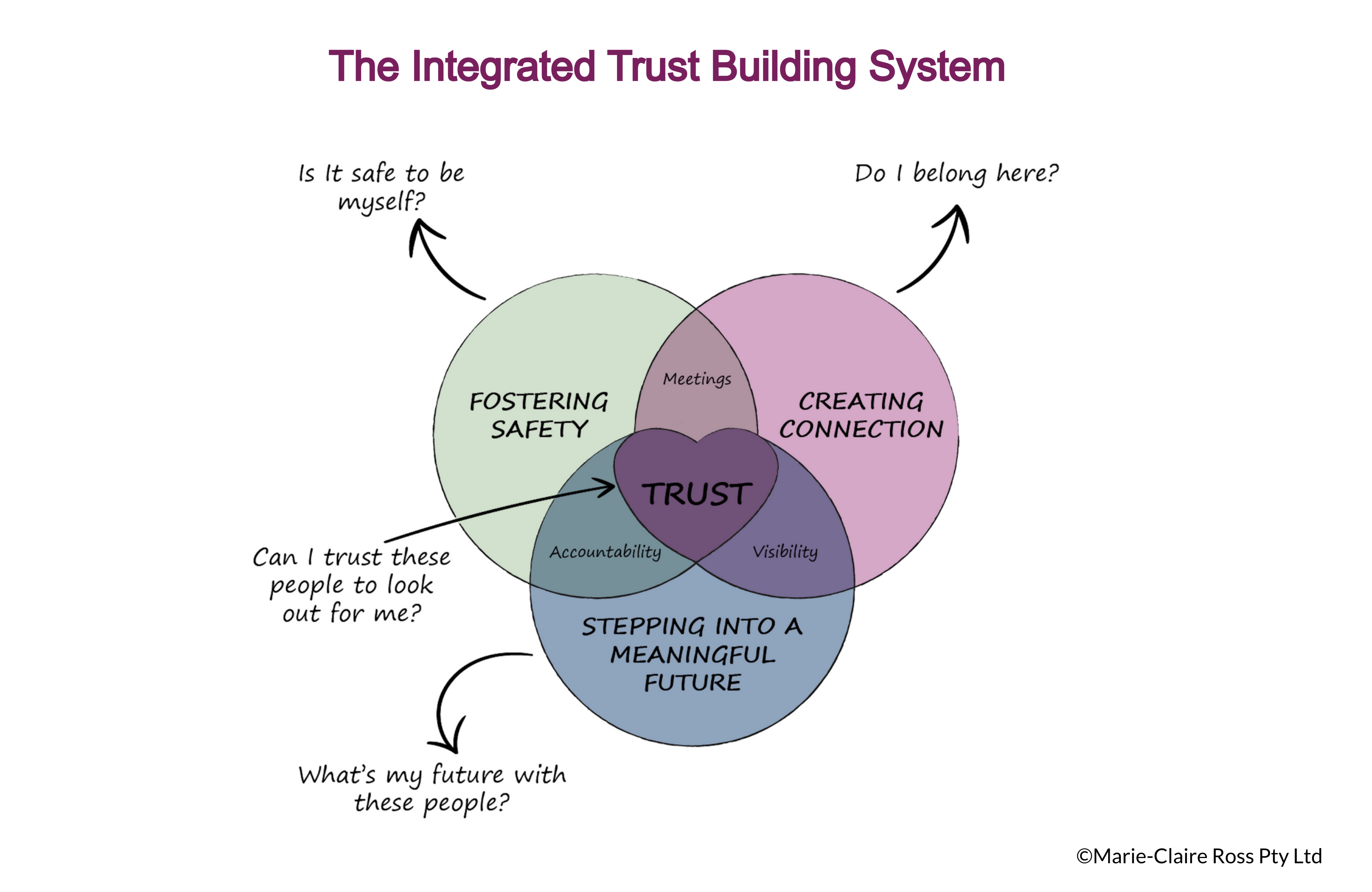
There comes a time in every team, when the energy seems to dip.
In today’s fast-paced business world, the more trust you have across your organisation, the faster you can operate.
Yet, when it comes to building trust, most leaders have trouble doing anything about it.
The issue? Well according to PWC’s 2016 global CEO survey, 55% of CEOs said they are not sure where to even start.
When it comes to improving trust, it’s really important to understand what it means first. Having a clear language around trust gets everyone on the same page. In the book, Trusted to Thrive: How leaders create connected and accountable teams, the definition for trust in the workplace is:
The ability for everyone in an organisation to confidently rely on (and predict) that others will do the right thing in times of risk and uncertainty.
Imagine that everyone in your organisation could rely on everyone around them. It means that you can all talk about the unpleasant stuff – performance issues as they arise or toxic, unaware behaviours. The speed with which you can accomplish results becomes so much faster.
So how do you confidently rely on others around you to treat you well, deliver on time, on quality and on budget?
Well, there are four things that leaders need to understand first so that trust improvements don’t get sabotaged.
We are biologically programmed to look out at the world and determine whether we can trust those around us. But we aren’t designed to look at ourselves to see whether we are behaving in a trustworthy manner.
High trust leaders realise that everyone is different and build trust with each individual according to their own unique needs. They don’t assume they have someone’s trust and they don’t assume that all they need to do is tell the truth and be consistent. That might be how they judge trust, but the other person might prefer that they support them in their career or showed interest in them outside of work tasks.
What this means is that when you are wanting to improve trust not only do you have to assess the areas where trust is lacking, but you have to assess where you are responsible. Ask yourself:
Does your team trust you to be a good leader and help them to succeed?
Can people confidently rely on you to do the right thing?
How many open up to you without fear?
Are your employees comfortable with challenging you and other team members?
Do people let you know about an issue before it’s too late?
Of course, your answers are most likely to be biased to the positive. The only way to truly know the answer is to be able to have those conversations with each team member and for them to have the courage to say the truth knowing that they are safe from negative consequences.
Trust is processed subconsciously on the part of the brain that has no capacity for language. That’s why you can’t just tell people to trust you. You have to prove it with your actions and doing what you say. People will make the decision to trust your leadership based on whether you follow-up on your promises, act confidently and hold yourself and other people to account.
Across an organisation, the link between behaviours and levels of trust is often unclear. That’s because the subconscious brain (where trust is processed) stores our habits and routines, but also our filters and biases that we developed as children. For most of us, we aren’t even aware of our own behaviours to be accurately able to understand another person’s behaviour.
Years ago, when I worked in market research, we would do pricing studies to determine whether a consumer would purchase a new product and for how much. These studies were notoriously unreliable. We would always have to factor in around a 30% drop in likelihood to purchase. That’s because people say one thing, but it’s their actions that determine what they will really do. It’s not that people are purposefully lying. It’s just that they might have wanted to impress the interviewer or that they hadn’t considered all the other variables that come with a buying decision. That’s why so many new products get launched each year and fail because initial research looked promising. You have to watch people’s behaviours.
Even Ikea learnt this the hard way. After surveying 8,300 customers about a new product that failed after launch, they realised asking customers whether they would buy a product wasn’t giving them the right information. Now, Ikea does research in people’s houses to see first hand how people really behave and make choices. Behavioural observation is much more powerful than people’s words.
When it comes to trust because it’s an emotion, people often don’t know why they trust or don’t. As a leader, people will trust you based on what you do rather than what you say. If you want to emotionally resonate with others, tell stories and metaphors to build an emotional connection that supports trust.
And be a keen observer of employee behaviour. One method to improve employee performance is to let people know what you are observing rather than making people feel wrong or bad. Using language such as “This is what I observed….what do you think?” is much easier for people to consider than “You cut people off and you act like a jerk.” Even if it is true.
Trust is like a battery. If you leave a fully charged battery alone, charge slowly disappears. If you aren’t proactively with building trust, it is declining. Never assume people trust you. Increasing your team’s trust is a process, not a single event.
Leaders need to think every day about how they’re going to build trust rather than tear it down.
Trust is more comprehensive and nuanced than we realise. We might make trust decisions every day, but this doesn’t make us experts in building trust.
High trust leaders are intentional about trust and make the time to understand how to build trust with each individual. They also realise that some people need more trust building than others. Trusted leaders study how to gain trust and they regularly review their behaviours, in order to improve.
Assuming that because you are a good person or high in integrity means that you don’t need to work at trust is misguided. We often act in ways where other people misinterpret our motives or we are not aware of the negative impact of our actions.
The fastest way to move forward as a leader is to accept where you are in terms of building trust. This means taking a non-judgemental look at ourselves and asking people for feedback. It also requires persistence to keep improving and faith that you have a right to be in charge.
Ask yourself: Do you trust yourself? Do you trust yourself to lead, to execute on a vision or to know what to do?
When we don’t trust ourselves to lead or don’t think we’re worthy of being a leader, other people feel that and automatically don’t trust us. They feel something is wrong with the energy we project. They might feel our power and capabilities but get confused as to why we don’t own that. If you get shocked by feedback in 360-degree interviews or from conversations with others about your ability to build trust, sometimes your hidden subconscious beliefs about yourself are sabotaging your good intentions.
Trust is about the future and people’s ability to predict what you will do and whether they can depend on you. This varies from whether you follow-up on promises, deliver to the right standard right through to caring about direct reports.
Savvy business leaders realise that building trust is not a once and done event and they’re not perfect. Trust building is a lifelong journey, but the benefits are endless.

There comes a time in every team, when the energy seems to dip.

Have you ever had a conversation with a boss and their reaction or language changed how you felt about them in that moment?